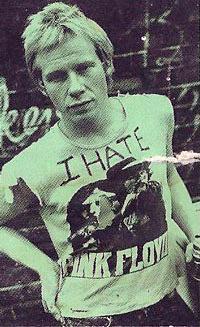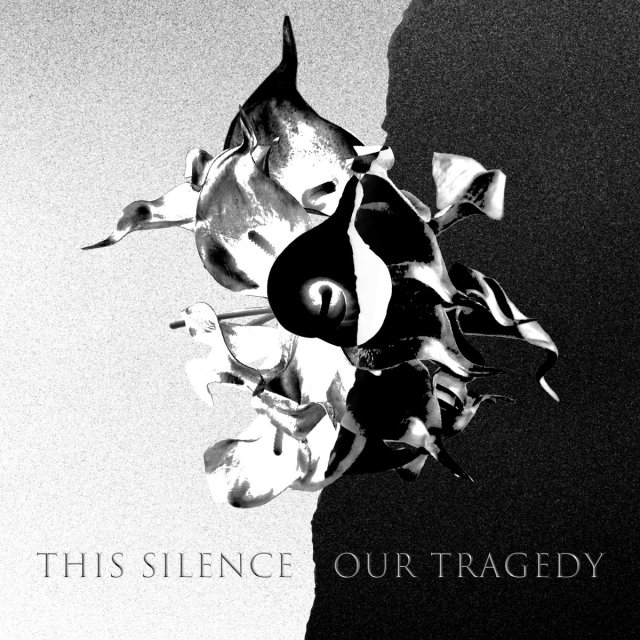It was back in the late 70s when I began to notice a change in the perception of synthesizers among musicians in the Post-Punk era. In 1977, Punk Year Zero, synthesizers were viewed with much suspicion as being the tools of the ruling elite, such as Pink Floyd or Rick Wakeman. The anti-rock star movement was seen as all about aggression, abrasion, and non-musicianship. The cash and talent needed to coax music out of the analog synths of the day set the bar of entry fairly high and in the end, it was seen as much easier just to bash a guitar like an animal as fast as possible as being the way forward. Which it was. For a short time, at least. But it was some time in 1978 when two things happened to challenge this new orthodoxy. First, the next generation of synthesizers hitting the market were a fraction of the cost of the hardware that had been born in the late sixties and had hardly changed much in a decade. Secondly, these devices were falling into the hands of what we would now call geeks who had been through the cleansing fire of Punk and who could now approach these devices from an angle that did not involve ice rinks and costume changes.
The band for me that stood at the precipice of Punk and then took the lesson of empowerment from it and moved further left in their quest was The Human League. When I say that synths were getting into the hands of geeks, in this case it was literal! Human League core members Philip Adrian Wright and Martyn Ware were working as computer operators at a hospital in the late 70s and were besotted with sci-fi enough that they recorded experiments that sounded like Doctor Who library music as produced by the BBC’s Radiophonic Workshop. Their demo tape was packed with then-obscure Philip K. Dick references. It was “hosted” by compere “Jason Taverner,” the protagonist from Dick’s novel “Flow My Tears, The Policeman Said.” Finally, the band’s name had mutated from “The Future” to “The Human League,” which was taken from a sci-fi based role playing game that those presumably geeklike, but not interested in elves and monsters, played!
Heard then, the first two Human League albums were riveting to these ears. Heard now, they were pure gold cascading from the left-field minds of outsiders who saw the synthesizer as a way of leveling the pop music playing field so that time-consuming musicianship was no longer the barrier to entry. Geeks with interesting ideas could now for several hundred Pounds buy a machine which they could master [and geeks specialize in mastering technical processes] and produce the soundtrack to their ideas with… all without getting bloody, blistered fingers! Who knows? They might even get on Top of the Pops?
Next: …Generation A Continue to develop.









![Chris Cross: 1952-2024 [part 2]](https://i0.wp.com/postpunkmonk.com/wp-content/uploads/2024/04/ultravox-cross.jpg?resize=200%2C200&ssl=1)



“…geeks who had been through the cleansing fire of Punk…” one of the greatest lines ever written on the pages of PPM!!!
I think many who try to analyze the history of DIY synth music/pop miss this completely. Punk didn’t destroy a dam allowing new music to flow, it leveled the high rises on Main Street forcing people to rethink how to rebuild pop and rock. Those Post-Punk synth pioneers brought in a new type of musical bricks and mortar building – a “Le Cobusier” or “Mies Van Der Rohe” musical landscape – to rival rock and pop’s faceless, bland tower blocks.
LikeLiked by 1 person
In reference to the shirt worn by “a” Pistol. In 2015 which record sounds more nasty and bitter, the Pistols Never Mind or Floyd’s Animals? Never Mind was just pub rock with great marketing. Animals for me is the keeper.
I bought the Leagues Dignity of Labour 12″ at time ( with the included Flexi disc) based on the art work. The MK1 version never did it for me and I know in the UK this first version is seen as the kings but to my ears, Cabaret Voltaire were ahead of them in a similar experiment.
LikeLike
Jordan – Welcome to the comments!! From my perspective, any Pink Freud past “Wish You Were Here” [which is the one “imperial period” Floyd album I like the most] is simply just too nasty and embittered! I can’t bing myself to experience Roger Waters and the very notion of him as he has been in the last [practically] 40 years causes me to recoil. I thought that Sex Pistols, once I heard them, sounded like heavy metal more than pub rock. Except for Lydon’s vocals, which were the furthest thing from your typical iron lung’d HM screeching. An instro copy of “Never Mind The Bollocks” would have sold in America at the time, I think. Lydon was the fly in the commercial ointment for them.
I can see where everyone in Sheffield probably looked to Cab Volt as inspiration for the “sound of the city” as it were, but they had a bigger connection to the avant garde to my ears. CV sit comfortably with the work that Throbbing Gristle were doing in the mid 70s. They were much more experimental. The Human League, on the other hand, were pop to my ears. Left field pop, but pop none the less. Wasn’t one of their manifestos to see if they could succeed in the pop market on the quality of their ideas only, with no reliance on musical talent as such? I have to admit; at the end of the day, I am a pop guy. In my head, everything I like is “pop music.”
LikeLike
You hit on the thing that has always killed me about Pink Floyd, or at least Floyd post Wish You Were Here – it always seemed Roger Waters was working out some personal, psychological issues at the expense of the band and the listener. At least with much of Wish You Were Here, there’s an air of coming to terms with events and actions, but after that, it’s the Roger Waters neurosis show for me – at the expense of David Gilmour’s good will.
The thing that is so vibrant (a weird word to use about anything to do with late 70’s Northern England) about the Sheffield music scene in those days was the amount of experimentation and diversity that could be found. Yes, hard rock and metal acts from the area were the ones in the charts, but that the city could also be the breeding ground for acts like HL, Cabs, Clock DVA, Vice Versa and I’m So Hollow and their experimentations and flirtations with electronic sounds.
LikeLike